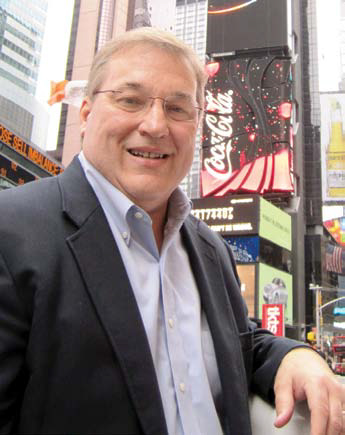Cobalt Keeps Audio on Even Keel at Quincy
QUINCY, ILL.—Quincy Broadcast-Print-Interactive is a family-owned media company with roots going back to 1835. Fast-forward to 2014 and the company now owns or operates 14 television and two radio stations serving 12 states. It also maintains an interactive division that provides community-centric Web, social media and mobile Internet sites, along with two newspapers.

Bradly Dreasler Having been around for so long, we’ve seen significant changes, especially in broadcasting. Audio in the analog world was simple; however, with the advent of digital it’s become very, very complex. As corporate director of engineering for Quincy, I’m responsible for equipment purchases and technology decisions. Transitioning our master and production control rooms to high definition required a massive upgrade, including loudness management to ensure compliance with government regulations and to provide a quality audio experience for our viewers. After careful consideration, we chose to standardize on Cobalt Digital’s 9985 and 9085 loudness processing cards.
FULL-FEATURED PROCESSING
One of the reasons we were so attracted to Cobalt’s cards is that they incorporate the award-winning Linear Acoustic Aeromax algorithm in a space-saving modular card that integrates with our terminal gear. The cards offer the same functionality that traditionally required gear occupying up to five RUs. Our staff was already familiar with Linear Acoustic’s algorithm, so learning the operation of the Cobalt cards was easy.
Several factors determine which card will work best for each station, including their network affiliation, number of channels, SD or HD, and local needs. The 9985 card is configured for surround sound and works best in our stations with 5.1 audio. It features automatic level detection, and if the audio is 5.1, the upmixer is bypassed; however, if it’s 2.0, then an upmix is applied and listeners benefit from 5.1 audio.
Another extremely attractive feature is Cobalt’s +AFO (automatic fail over) option that inserts a downmix of the 5.1 or 2.0 main programming onto SAP channels if no audio is detected there, thus ensuring that there’s always audio on the SAP channel.
For stations that are strictly 2.0, the 9085 is an ideal match. It provides Linear Acoustic 2.0 processing in an economical fashion.
Cobalt’s cards give us a sophisticated, comprehensive on-air loudness metering, assessment and processing solution that’s A/85-compliant and keeps us within CALM-mandated operating levels.
Even with the best practices, importing content sometimes comes with problems that require correction. The 9985 and 9085 use a multiband loudness processing algorithm that targets frequency ranges within the program material without producing the audio artifacts common in other audio compressors.
SUPPORT IS VERY IMPORTANT, TOO
With any product, performance is a requirement, but manufacturer support is also is equally essential; without that support the product is useless. Our support from Cobalt, their interaction with us and their ongoing training has been very helpful and appreciated.
As we add stations, we’ll continue to add Cobalt gear. At the end of the day, it’s about vendor support and how well they stand behind you, hold your hand, train you and continue to improve their products, even after you’ve already bought them.
Brady Dreasler is corporate director of engineering for Quincy Broadcast Print Interactive group. He may be contacted atbdreasler@quincyinc.com.
For further information, contact Cobalt Digital at 217-344-1243 or visitwww.cobaltdigital.com.
Get the TV Tech Newsletter
The professional video industry's #1 source for news, trends and product and tech information. Sign up below.
